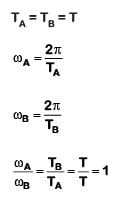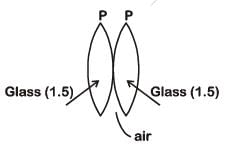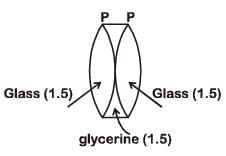Test: NEET 2019 Past Year Paper - NEET MCQ
30 Questions MCQ Test - Test: NEET 2019 Past Year Paper
In which of the following processes, heat is neither absorbed nor released by a system?
Increase in temperature of a gas filled in a container would lead to :
The total energy of an electron in an atom in an orbit is –3.4 eV. Its kinetic and potential energies are, respectively:
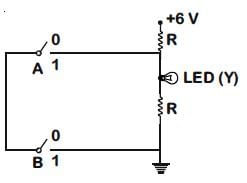
The correct Boolean operation represented by the circuit diagram drawn is :
A block of mass 10 kg is in contact against the inner wall of a hollow cylindrical drum of radius 1 m. The coefficient of friction between the block and the inner wall of the cylinder is 0.1. The minimum angular velocity needed for the cylinder to keep the block stationary when the cylinder is vertical and rotating about its axis, will be : (g 10 m/s2 )
Body A of mass 4m moving with speed u collides with another body B of mass 2m, at rest. The collision is head on and elastic in
nature. After the collision the fraction of energy lost by the colliding body A is :
The speed of a swimmer in still water is 20 m/s. The speed of river water is 10 m/s andis flowing due east. If he is standing on the south bank and wishes to cross the river along the shortest path, the angle at which he should make his strokes w.r.t. north is given by :
A mass m is attached to a thin wire and whirled in a vertical circle. The wire is most likely to break when:
The displacement of a particle executing simple harmonic motion is given by
y = A0+ Asinωt + Bcosωt
Then the amplitude of its oscillation is given by :
A 800 turn coil of effective area 0.05 m2 is kept perpendicular to a magnetic field 5 × 10–5 T. When the plane of the coil is rotated by 90° around any of its coplanar axis in 0.1 s, the emf induced in the coil will be:
Average velocity of a particle executing SHM in one complete vibration is :
A soap bubble, having radius of 1 mm, is blown from a detergent solution having a surface tension of 2.5 × 10-2 N/m. The pressure inside the bubble equals at a point Z0 below the free surface of water in a container. Taking g = 10 m/s2, density of water = 103 kg/m3, the value of Z0 is
A copper rod of 88 cm and an aluminium rod of unknown length have their increase in length independent of increase in temperature. The length of aluminium rod is:
(αCu = 1.7 × 10-5 K-1 and αAl = 2.2 × 10-5 K-1)
When a block of mass M is suspended by a long wire of length L, the length of the wire becomes (L + l). The elastic potential energy stored in the extended wire is :
A disc of radius 2 m and mass 100 kg rolls on a horizontal floor. Its centre of mass has speed of 20 cm/s. How much work is needed to stop it?
In an experiment, the percentage of error occurred in the measurement of physical quantities A, B, C and D are 1%, 2%, 3% and 4% respectively. Then the maximum percentage of error in the measurement X, where  will be
will be
A body weighs 200 N on the surface of the earth. How much will it weigh half way down to the centre of the earth ?
Which colour of the light has the longest wavelength?
A solid cylinder of mass 2 kg and radius 4 cm is rotating about its axis at the rate of 3 rpm. The torque required to stop after 2π revolutions is
The radius of circle, the period of revolution, initial position and sense of revolution are indicated in the fig.
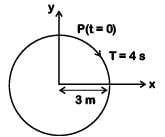
y - projection of the radius vector of rotating particle P is :
A hollow metal sphere of radius R is uniformly charged. The electric field due to the sphere at a distance r from the centre
In which of the following devices, the eddy current effect is not used?
Six similar bulbs are connected as shown in the figure with a DC source of emf E and zero internal resistance.
The ratio of power consumption by the bulbs when (i) all are glowing and (ii) in the situation when two from section A and one from section B are glowing, will be :

At a point A on the earth's surface the angle of dip σ = + 25°. At a point B on the earth's surface the angle of dip, σ = - 25°. We can interpret that :
A force F = 20 + 10 y acts on a particle in y direction where F is in newton and y in meter. Work done by this force to move the particle from y = 0 to y = 1 m is
Pick the wrong answer in the context with rainbow.
A cylindrical conductor of radius R is carrying a constant current. The plot of the magnitude of the magnetic field. B with the distance d from the centre of the conductor, is correctly represented by the figure :
Two particles A and B are moving in uniform circular motion in concentric circles of radii rA and rB with speed vA and vB respectively. Their time period of rotation is the same. The ratio of angular speed of A to that of B will be :
Two similar thin equi-convex lenses, of focal length f each, are kept coaxially in contact with each other such that the focal length of the combination is F1. When the space between the two lenses is filled with glycerine (which has the same refractive index (μ = 1.5) as that of glass) then the equivalent focal length is F2. The ratio F1 : F2 will be :





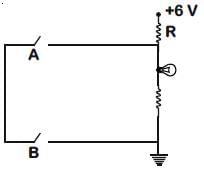
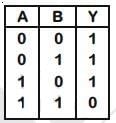
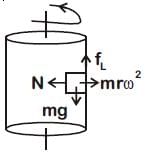




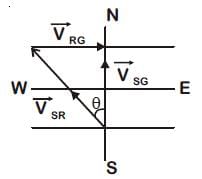
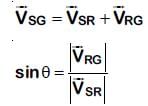
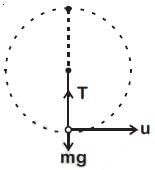


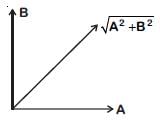





 (K = coefficient of thermal conductivity)
(K = coefficient of thermal conductivity)








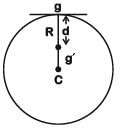











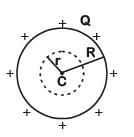


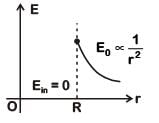

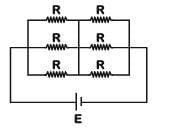

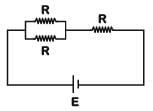
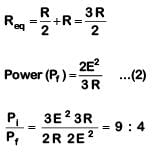
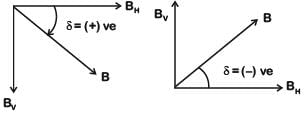




 ...(ii)
...(ii)


